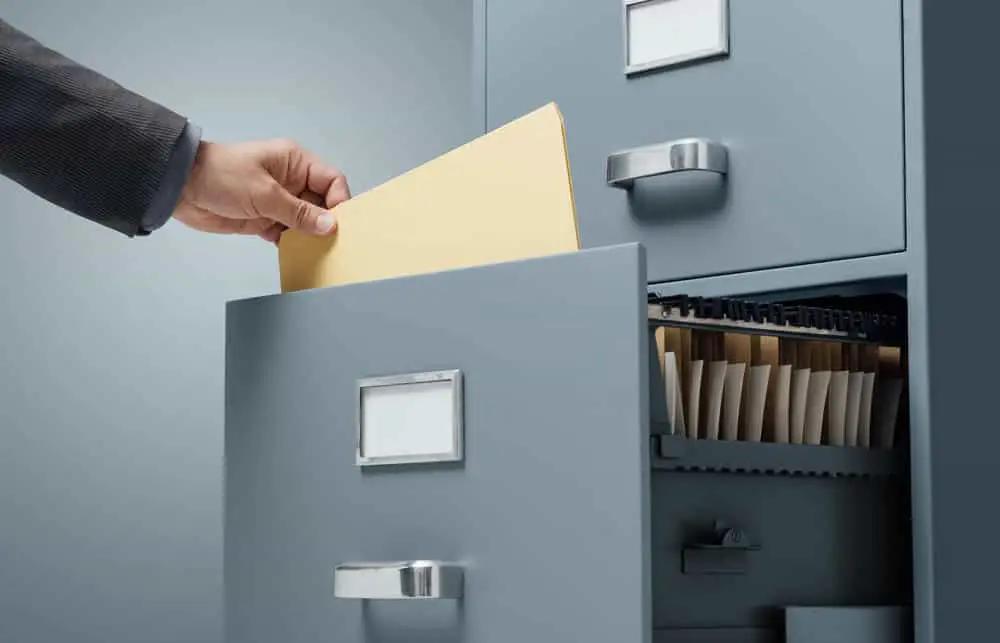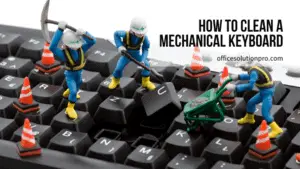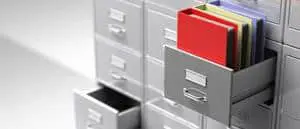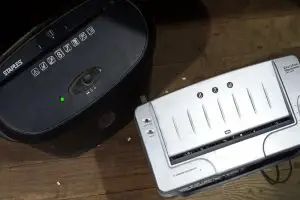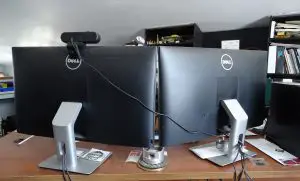It’s not that uncommon to lose a key to a filing cabinet when you’re at work or never to receive one at all. In fact, keys to filing cabinets are some of the most elusive types of keys, but if you’re at work and suddenly discover that your file cabinet is locked and you’re unable to get into it, don’t panic.
How to pick a file cabinet lock? To pick a file cabinet lock, straighten out a paperclip and leave one of the ends curved. Hold the paperclip vertically and insert the curved end into the keyhole, which will push down on the pins inside. You can do the same with a nail clipper file.
The truth is, learning how to pick a file cabinet lock is a lot easier than you think, and best of all, you don’t have to permanently damage the file cabinet just to get it open again.
We hope you love our tips & how-tos. Office Solution Pro is supported by its readers. This post may contain affiliate links. We may earn a commission at no additional cost to you.
Getting Started – What Tools Do You Need?
Getting a file cabinet open means starting with the right tools, but fortunately, when we say “tools” we mean one of two things – a paper clip or a nail clipper file! If you’re at the office, finding a paper clip should be no problem whatsoever, and a lot of people have a set of nail clippers in their purse or pocket.
Once you get your hands on one of these items, you’re ready to get started, and best of all, you don’t need any special skills to unlock a filing cabinet without a key. All you need is the right know-how, and you’re ready.
You should also know that, at this point, your biggest concern is likely breaking the paper clip or nail file – not the file cabinet itself! So, go ahead and jump in and start opening that cabinet because the worst that will happen is you’ll have to get a second paper clip or nail clipper file to get the job done.
You might also like: Are File Cabinets Fireproof?
1. Using a Paper Clip
Using a paper clip is the easiest way to learn how to pick a file cabinet lock, and all you have to do to get started is straighten the paper clip. You might need a set of pliers to do this correctly, and make sure you leave the tip of the paper clip bent at an angle.
Once you have it in this shape, you simply place the bent end into the keyhole, making sure the bend is held vertically and not horizontally. This is because the bent end is going to push down on the pins inside of the lock, and it has to be in a vertical position to do this.
How to Unlock a Filing Cabinet with a Paper Clip
To find the unlock position, you have to move the paper clip to the right and left until you feel a “smooth” action without any catches. Do this gently, so nothing breaks, and once the paper clip turns to the right or left without catching on anything, you’ve found the unlock position.
Also, remember that some cabinets are opened by turning the key in a counter-clockwise position, although most accommodate a clockwise position instead.
Keep turning your paper clip until you notice the keyhole is horizontal. Only when you notice the keyhole in a horizontal position should you remove the paper clip. Most file cabinet locks will be in a horizontal position when they’re open, but note that some will end up in a vertical position instead.
If you have to turn the paper clip counter-clockwise to get it open, it will likely be the type of lock system that is vertical when unlocked. At this point, you should be able to slide the cabinet door open as long as the paper clip is completely removed from the keyhole. If not, you may have to start everything all over again.
2. Using a Nail Clipper File
If the first technique doesn’t work, you can go to Plan B, using the file part of a metal nail clipper. You likely already know that learning how to pick a file cabinet lock is much easier when you have some type of metal, pointed object, and the fingernail file on a set of nail clippers is perfect for this purpose.
To get started, make sure the file is protruded and, therefore, easy to use, but if your file has a flat tip and not a curved one, you’ll have to find one that has the latter. A flat-tipped nail file won’t work.
How to Open a Filing Cabinet with a Nail Clipper
Once you get a file with a curved tip, insert it into the keyhole and ensure the tip of the point is facing down. Try to get the file as far into the keyhole as possible. You’ll notice that when you’re done, most of the file will be inside the keyhole.
Next, turn the file back and forth until it stops catching on anything. Sometimes this step takes a little bit of work, and it might even be a bit time-consuming, but keep turning it to the left and right until the file slides easily either to the right or to the left without catching on anything.
At this point, go ahead and move the file up and down. Most locks will have five pins, and you’ll need to move the file up and down until all five pins are moved correctly. If you can move the file up and down effortlessly, it means you’ve been able to move the pins and, therefore, unlock the cabinet drawer.
Move the file in the right direction (usually clockwise) until it gets into the unlocked position. At this point, you may even hear a slight clicking sound. Once again, you’ll move the key until the keyhole is in a horizontal position (vertical position for those keyholes that require a counter-clockwise motion to unlock).
Once the keyhole is in a horizontal position, you should be able to gently remove the nail file and slide open the drawer. Using a nail clipper file is one of the simplest ways to unlock a filing cabinet.
You might also like: How to Paint a Metal File Cabinet
3. The Two-Handed Method
Another technique, albeit a difficult one, is to use two items: a paper clip that has been straightened and a bobby pin bent into an L shape. You insert the bobby pin into the lock, then insert the paper clip at the top of the lock to try and feel the pins that are there.
Wiggle the paper clip around while keeping the bobby pin inside of the lock. You have to create tension with the bobby pin and put pressure on the pins with the paper clip simultaneously.
Eventually, you’ll be able to turn the pin so the cabinet unlocks. When deciding how to pick a file cabinet lock, you’ll notice this method as the most complex one, which is why most people start with something easier.
PRO TIP: If you are looking for the perfect files and documents storage solution for your home office, then consider reading our reviews of the best file cabinet for home office. We’ve included only the highest quality and space-saving file cabinets that will make your work life easier.
Conclusion
Learning to pick a file cabinet lock is not complicated, but it often takes some practice to get it right. Before you go out and buy yourself a brand-new filing cabinet, trying to open the lock yourself is a smart option. You may have to try your method a few times to get it to work, but the main thing to remember is that those pins must be moved into the proper position to unlock and open your file cabinet drawer.
If none of these methods works, you might want to try using a key from another filing cabinet, as this works part of the time. Some people use a kitchen knife instead of a paper clip, but this technique usually isn’t recommended because it is potentially dangerous. Indeed, the simplest methods are usually the ones that work best. 🙂
